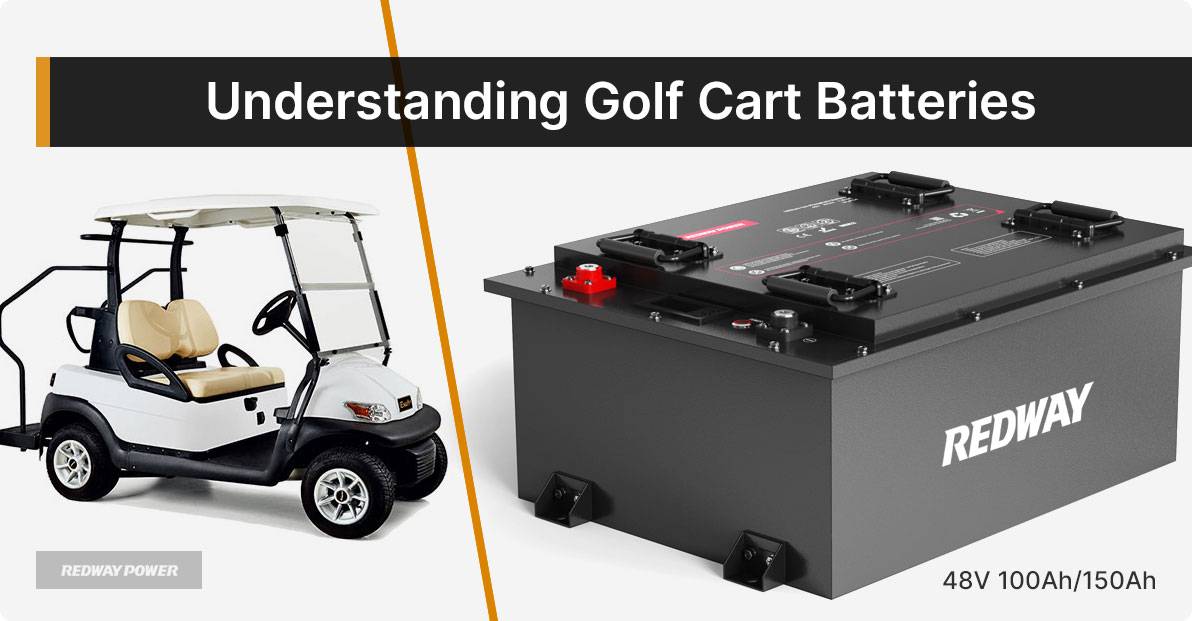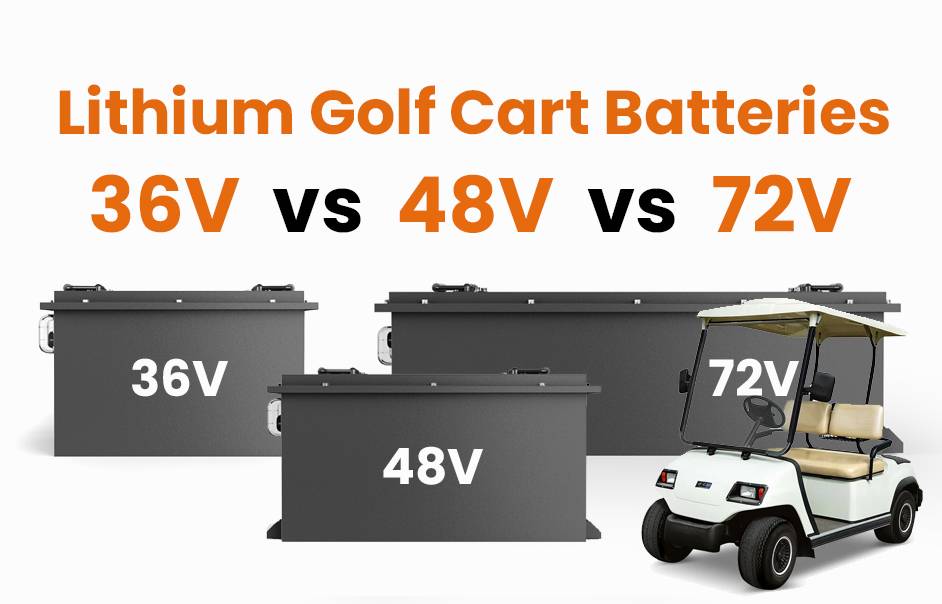- Forklift Lithium Battery
- Golf Cart Lithium Battery
- Rack-mounted Lithium Battery
51.2V 100Ah Rackmount LiFePO4 Battery
8000 times (80% DOD 0.5C)
Optional SNMP for TELECOM - Car Starter Battery
- 12V LiFePO4 Battery
12V 150Ah Lithium RV Battery
Bluetooth App | Self-heating
LiFePO4 | Group 31
UL 1642 | IEC 62619 - 24V LiFePO4 Battery
- 36V LiFePO4 Battery
- 48V LiFePO4 Battery
- 60V LiFePO4 Battery
60V 100Ah Lithium Battery (AGV, AMR, LGV)
Peak Discharge Current 400A
500 x 298 x 349 mm - 72V~96V LiFePO4 Battery
72V 100Ah Lithium Golf Cart Battery
Peak Discharge Current 315A (10S)
740 × 320 × 246 mm - Wall-mounted Lithium Battery
51.2V 100Ah 5kWh
Wall-mounted Battery532 x 425 x 170 mm / LiFePO4
>8000 Cycles (80% DOD 0.5C)
RS485 / CAN-bus
for Solar Home ESS - Home-ESS All-in-One
51.2V 32kWh
All-in-On HESS SystemPowerAll
51.2V / LiFePO4
>8000 Cycles (80% DOD 0.5C)
RS485 / CAN-bus / WiFi
All-in-One for Home ESS
How to Care for and Enhance Your Golf Cart Batteries and Accessories

Golf cart batteries are essential for powering electric golf carts, and their performance can significantly impact your overall experience. Understanding the types, maintenance needs, and accessories available can enhance battery life and efficiency. Proper care ensures your golf cart operates smoothly and lasts longer, making it a worthwhile investment.
What Are the Different Types of Golf Cart Batteries?
Golf carts typically use one of three main types of batteries:
- Flooded Lead-Acid Batteries: These are the most common and cost-effective option. They require regular maintenance, including water refills, but are highly recyclable.
- AGM (Absorbent Glass Mat) Batteries: These maintenance-free batteries are spill-proof and have a longer lifespan than flooded lead-acid batteries, though they come at a higher initial cost.
- Lithium-Ion Batteries: Known for their lightweight design and rapid charging capabilities, lithium-ion batteries are becoming increasingly popular despite their higher price tag due to long-term savings on maintenance.
Chart: Comparison of Battery Types
| Battery Type | Lifespan (Years) | Maintenance Level | Cost Range |
|---|---|---|---|
| Flooded Lead-Acid | 3-6 | High | $100-$300 |
| AGM | 4-8 | Low | $200-$500 |
| Lithium-Ion | 5-10 | Very Low | $1,000-$2,500 |
How Do You Choose the Right Battery for Your Golf Cart?
Choosing the right battery involves several considerations:
- Voltage Requirements: Most golf carts operate on either 36V or 48V systems. Ensure you select batteries that match this configuration.
- Capacity (Amp Hours): Determine your usage needs; higher amp hours translate to longer run times between charges.
- Brand Reputation: Opt for trusted brands like Trojan or US Battery for reliability and warranty support.
Chart: Voltage Requirements by Battery Configuration
| Configuration | Number of Batteries | Voltage per Battery | Total Voltage |
|---|---|---|---|
| 36V | 6 | 6V | 36V |
| 48V | 4 | 12V | 48V |
Why Is Regular Maintenance Important for Golf Cart Batteries?
Regular maintenance is crucial for extending battery life and ensuring optimal performance:
- Avoid Complete Discharge: Always recharge after use to prevent deep discharge, which can damage batteries.
- Check Water Levels: For flooded lead-acid batteries, regularly check and refill water levels with distilled water.
- Clean Connections: Keep terminals clean to prevent corrosion, using a mixture of baking soda and water if necessary.
By adhering to these practices, you can significantly prolong the life of your golf cart batteries.
What Accessories Can Enhance Your Golf Cart Battery Performance?
Several accessories can help improve battery performance:
- Battery Maintainers: These devices keep your battery charged during off-seasons or when not in use.
- Smart Chargers: Advanced chargers optimize charging cycles, reducing wear on batteries while ensuring they are fully charged.
- Battery Covers: Protecting your batteries from extreme temperatures can help maintain optimal performance.
Investing in these accessories can enhance your golf cart’s efficiency and battery longevity.
How Can You Extend the Lifespan of Your Golf Cart Battery?
To maximize your golf cart battery’s lifespan:
- Regular Charging: Charge your battery after each use rather than allowing it to deplete fully.
- Proper Storage: Store your golf cart in a cool, dry place during off-seasons to prevent damage from extreme temperatures.
- Monitor Performance: Keep an eye on voltage levels; if you notice significant drops in performance or charging time, it may be time for a replacement.
By following these guidelines, you can ensure that your golf cart battery remains healthy and functional over time.
Industrial News
Recent trends in golf cart battery technology highlight a growing shift towards lithium-ion solutions due to their efficiency and reduced maintenance requirements. Manufacturers are focusing on developing smarter charging systems that enhance battery life while minimizing environmental impact. Additionally, new regulations are pushing for more sustainable practices in battery production and recycling.
Redway Power Insights
“Understanding the nuances between different types of golf cart batteries is essential for any owner,” says an expert at Redway Power. “With advancements in technology, choosing the right battery type can lead to significant long-term savings and improved performance.” As electric vehicles gain popularity, staying informed about battery care will be crucial for maximizing investment.
FAQ Section
Q1: How long do golf cart batteries typically last?
A1: Depending on the type and usage patterns, golf cart batteries usually last between 3 to 10 years.Q2: Can I use car batteries in my golf cart?
A2: No, car batteries are not designed for deep-cycle usage like golf cart batteries and may damage the cart’s electrical system.Q3: What signs indicate my golf cart battery needs replacement?
A3: Signs include diminished run time, prolonged charging periods, and an inability to hold a charge effectively.


















